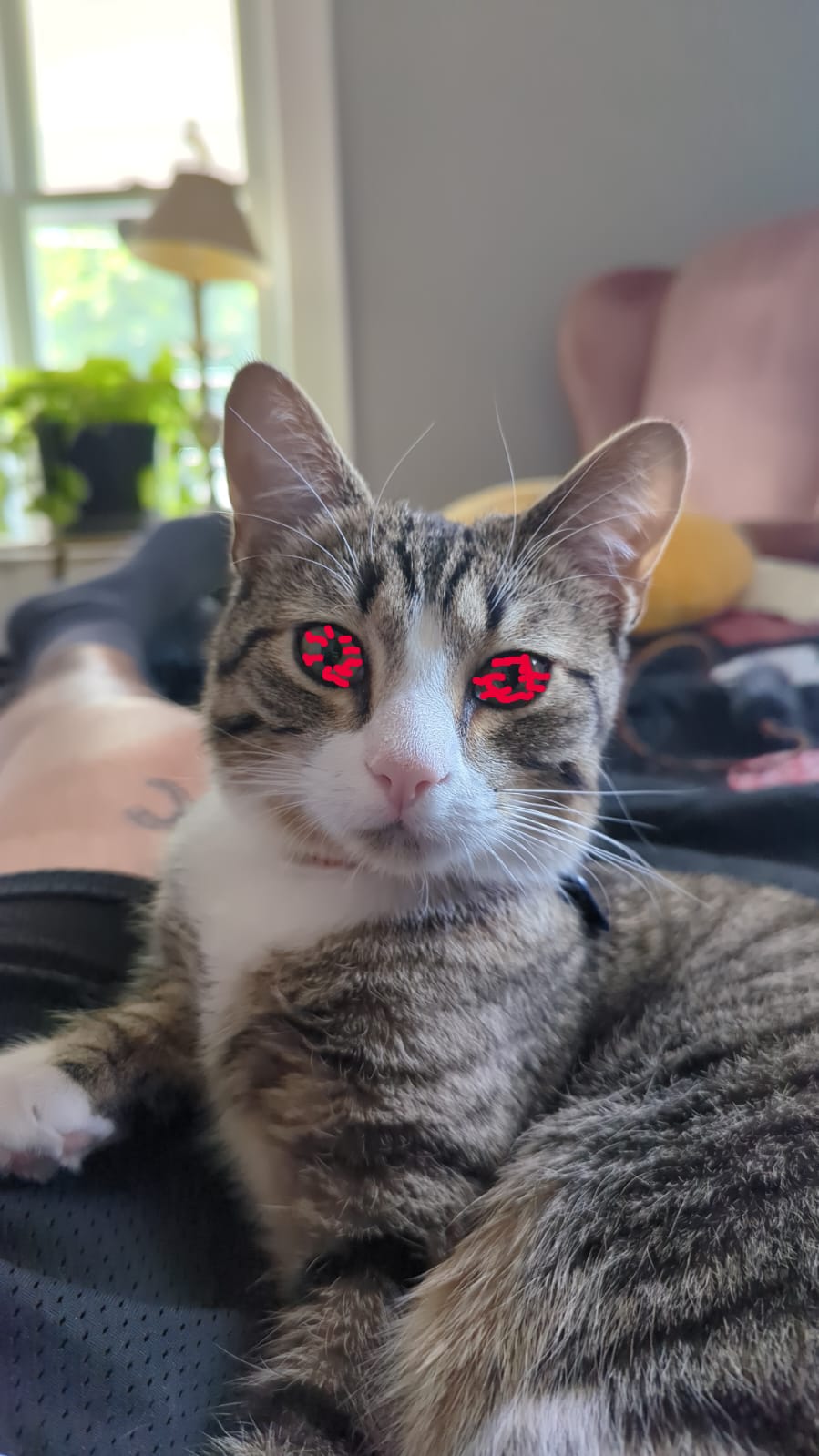A guy on YT actually tried it experimentally a few years ago (how many slaps, not how fast one slap); and it works to some degree! The main problem becomes to make a slapping machine that can survive long enough:
https://www.youtube.com/watch?v=LHFhnnTWMgI&pp=ygURc2xhcCBjb29rIGNoaWNrZW7SBwkJzgkBhyohjO8%3D
YouTube is truly a wonder of stupidity. Sometimes in good ways
This slap question was a big meme several years ago, and when that video came out (years after the meme), it was an instant hit.
The fact that this discussion is still going shows how popular it is
IDK, might be laying the groundwork for future kinetic cookers.
He also did a turkey a couple years after that for “slapsgiving”
Typical physicist, ignoring enthalpy of phase changes. Starting from 1C defrosted makes a huge difference from 0C as the melting takes up a ton more energy/slaps. Their underslapped chicken would give you salmonella
Also completely neglecting that not all the energy in a slap will be transferred to thermal energy in the chicken.
Assume a spherical chicken…
tbf modern commercial chickens are basically spherical, the poor bastards
They haven’t considered rate of slap. Significant heat transfer to environment even at 10 slaps per second.
They’re also assuming sea level standard atmospheric conditions. You may need to reduce rate of slap at altitude.
Also only about half the heat goes into the chicken and the other half into the hand used for slapping
I believe we’re well on our way to developing the worlds first slap coefficient.
This assumes both have the same amount of heat capacity * mass. A hand with heat insulating gloves would also significantly reduce heat loss.
Better do it in a vacuum though, you’ll lose energy to air resistance
🤔
And the phase change from uncooked to cooked.
Where do I find cooked in the phase diagram?
Slap the salmon
Bro really wanted his chicken well done at 400°F
Naw, that’s burnt.
Maillard reaction where things brown starts at 350f.
More than 165/175 in the center and that’s dried out.
The mallard reaction is only relevant when cooking duck.
If you spatchcock your bird then you’ve only gotta slap your cock to about 150°F at the thickest part of breast
naturally. Best to slow it down and keep it juicy, too. I like smoking them at about 200 f, it’s perfection.
also… way to make spatchcocking sound even dirtier than it is. the no cooks here are probably thinking it’s some sort of sex act and the rest of us are wondering if it’s not also some sort of sex act.
spatchcocked birds also kinda look like a random roadkill animal to the ignorant, idk if you care about who sees you grillin
This is why you carve before getting to the table. Or at least break it into parts.
I saw your username first.
Then I misread the rest as a Mallard Reaction.
that only happens in ducks
I thought about making an intentional joke about being the “mallard reaction” and saying “isn’t that quackers” or something, and decided to not confuse people.
Gotta love how everyone forgot about Newton in all this. Enjoy your instantly well-cooked hand, which is also made of meat.
Double the food. Sweet!
recycling!
My man, if you slapped something at 32,000 miles per hour, you don’t have a hand to cook anymore :P
That’s something like mach 4.8 at sea level?
Cook your hand too 😄
Your hand would disintegrate long before you slap it enough to cook it
Lord have mercy on folks cooking their chicken to 400 F. Those birds will come out as dry as the sands of the Sahara.
https://youtu.be/hzMzFGgmQOc?t=285
“well done steaks. if I see a speck of red, it’s going back. you better cook my food”.
Signed, a well done meat enjoyer.
I mean, false equivalency, don’t you think? I have yet to meet an enjoyer of medium-rare chicken, probably because the Salmonella or Listeria already took them out
Right. You can get away with it in beef because the pathogens for that are on the surface. As long as the outside is cooked, it’s technically safe to eat. (This does not apply to ground beef, which is all mixed up).
Chicken and pork have pathogens throughout the meat. They must be cooked all the way through.
Technically false. Taenia saginata (beef tapeworm) embeds itself in a cystic form in the skeletal muscle of cattle and is transmitted to humans through consumption of undercooked, contaminated beef. Not very common in North America, and relatively easy to catch during inspection, but youre wrong that undercooked beef is safe to eat, strictly from technical standpoint.
Also, can you provide evidence of your claim that pathogens only infect the ‘surface’ of beef, but penetrate chicken and pork?
That being said, I will always order beef tartare from a reputable restaurant if it’s offered. yolo
It’s commonly known among sous vide cooking. The internal temp for sous vide beef is often <60C, and that makes some people nervous. However:
https://www.americastestkitchen.com/articles/1131-is-sous-vide-safe
First, let’s talk about what’s dangerous. A few types of bacteria in particular are responsible for most foodborne illness: Salmonella, Escherichia coli, and Campylobacter jejuni. Salmonella, a resilient group of bacteria that is most commonly found in poultry and eggs, is ingested by chickens, and then contaminates their muscle tissue, intestines, and ovaries. Salmonella can migrate into the muscle of chickens, meaning that they are contaminated not just on the surface but also inside the meat. Escherichia coli is a general group of bacteria that reside in the intestines of many animals, including humans. But if ingested, some strains of E. coli can wreak havoc. Campylobacter jejuni is a spiral-shaped bacteria that causes one of the most common diarrheal illnesses in humans in America.
(Edit: emphasis added above)
This may not be true with techniques like blade tenderization. That can transfer pathogens from the surface to the internals.
Taenia saginata will die in only 5 minutes at 56C, which is quite a low temp even for sous vide. In fact, most beef jerky recipes will typically set the dehydrator’s temperature higher than that. It’s typical that slightly lower temps will work if it’s done for longer–jerky and sous vide usually takes several hours–but I don’t have a chart handy for taenia saginata specifically.
Fascinating! Thank you for being informative. Truly appreciate it.
Yes that is about 2.5 times the recommended safe temp. I am not going the math though.
Only ~40% higher - make sure to use absolute units when taking a ratio of temperatures.
205°C 😂😂😂
Common sense and physicists are common enemies
I confirm this as a physics PhD. I also understand exactly this thinking of assuming a system is in thermal equilibrium where it is far from it (like a chicken in am oven).
Maybe they like their chicken fucking black
Well otherwise it has to stay at some 100 degrees for quite a long time to consider it cooked
You need the chicken to be 165F or 74C to be food safe. It takes a long time to cook at 100-200C because the heat is being transferred much slower. If we’re using this instant slap-based cooking method, it only needs to get to the food safe temperature.
Using the OP’s calculations and a cooked temperature of 74C:
It would take 8315 average slaps
or
A slap at around 813m/s or 1819mph.
*Edit for a correction to the second calculation (it still might be wrong), also, I rounded the numbers to whole integers.
I rounded the numbers to whole integers
whole integers, the best kind of integers
Look, I just finished my medical board exams recently. My brain is running on the power of about 2/3rds of a yukon gold potato here.
As your friendly neighborhood person with knowledge about food and cooking, 2 pounds is an absurd weight for an uncooked rotisserie chicken, that is a very small and cooked weight, 4-6 pounds is going to be typical. Also, more importantly, you cannot cook something faster by increasing the temperature past a pretty quick point, meat is an excellent insulator. No slap can cook the inside of a frozen chicken unless the entire chicken disintegrates.
Tbf though, a slap at 3700 mph would absolutely disintegrate the chicken.
Also, if you cooked it to 400 degrees it would be disgusting. You just need to cook it to 165. This guy might know about physics but he has never cooked anything before.
Speak for yourself, I love a good carbonized chicken
I’ve read that bone-in chicken should actually get to 190°F as this is when the collagen renders, but Idk it was on the Internet so…
This is basically the foundation of barbecue. Off you have a cut of meat that’s tough and high in connective tissue, if you cook it at a low temperature for a long time, once it gets around 190 the collagens start to break down and the meat gets tender. Things like chuck roasts, brisket, pork shoulder.
This has nothing to do with chicken though. A chicken breast, bone in or not, will be disgustingly dry at 190 degrees.
You can cook chicken legs to a higher temp like 180-185°F, but if you do that with white meat it will be dry af.
That’s right, it was when I was looking up the best way to cook a chicken quarter, or rather 60 of them.
Shredded chicken it is
And your hand
The chicken has to exceed the boiling point of water for it to be cooked? Unless we’re making chicken caramels, I don’t think so.
Doing some math, I think it works out to 6,242 slaps or a single slap at 1,939 mph. Much more attainable.
That 205C would just be the surface temperature of the chicken, not the average. Note that the calculation doesn’t take into account the volume or radius
EDIT: No, I’m wrong. The calculation is for boiling the whole chicken. Who was this written by, a Brit?
Who was this written by, a Brit?
Nope. Likely an American.
When cooking, people in general like to use round numbers, like “200°C”, since a difference of 5°C in oven temperature is not a big deal.
And yet they went with some oddly specific 205°C. That only makes sense if they’re used to Fahrenheit, eyeballed a round value (like 400°F), converted it into Celsius (204.4°C), and then rounded it up to discard the decimal.
I’m also going to say they’re completely clueless when it comes to cooking - 200°C is the oven temperature. The chicken itself reaches a far lower temperature, in the 70~80°C range. By the time the chicken reached 200°C, it’s already dry and close to catching fire. (The self-ignition temperature for biological stuff is typically between 200°C and 250°C.)
Are you sure? The numbers in the
tweetreddit post talk about total mass and heat capacity. So I think that means the entire bulk has that average temperature.See my edit
One thing’s for sure: a chicken slapped at 3726 mph won’t be very tasty. Or look too good.
What, you don’t like
vaporizedionized poultry?slap
It won’t be a chicken anymore, Instant mist
Single slap assumes all kinetic into heat, which isn’t. Alot is lost to the slap sound, alot more is lost into the flying bits of pulverised chicken bits.
Yes. I think, at these speeds, you have to model the chicken as a liquid.
Then might have to model for the chicken splash and chicken cavitation.
Just strap your hand open palm while riding a asteroid travelling at 10-20mps
But how do you get the chicken back from the stratosphere once you’ve slapped it that fast?
You start in the stratosphere and slap it down towards the Earth.
Better to slap it twice at half strength so that it’s cooked when you catch it.
Smh it’s like these people have never slapped a chicken before
Lmao
Yeah yeah we get it, Newton will fry your hand and pls don’t cook a chicken to 205°C core temp.
BUT! What kinda physics major forgets Newton AND the fact that you won’t convert kinetic energy into heat with 100% efficiency?
I know, three math majors in a trench coat, that’s who’ll forget it.
This guy engineers! Real world applications experience vs math
In general, chicken needs to be heated to 74C or 165F for a few seconds to kill off dangerous pathogens.
Here is a list of other times and temperatures for chicken to be considered safe
At this point we have to consider the ambient temperature as well, as the chicken will slightly cool between two slaps once it exceeds it
Assume the chicken is spherical an in vacuum.
I think we should put more consideration into the fact that slapping the chicken this much will dissipate a lot of energy into deforming the chicken.
No one’s going to point out the absurd starting assumption KE=mcT??
Why is that absurd?
You need a perfect transfer of the kinetic energy to the chicken for that to hold, not a slap
i love fully inelastic chicken
Yeah that’s the part that erks me the most. Ain’t no way that chicken is staying together.
And no heat losses from slapping the chicken either
And they’re not accounting for any amount of cooling between slaps. What’s the ambient temp? What’s the rate of slap?
Introducing the pneumatic oven range. Place the chicken in the can and press the button… No mess cooking and bone meal blending! High calcium foods!




















